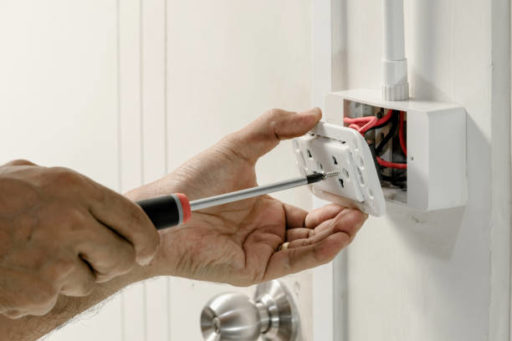Updating Old Electrical Systems: Making Your Home Safer and More Energy-Efficient

When it comes to home improvements, updating old electrical systems is one of the most important things you can do. Because technology changes so quickly and modern tools use more power, it is very important to make sure that your home’s electrical system is up to date.
This guide will go into great detail about how important it is to update old or broken electrical wiring and outlets so that they meet modern safety standards and can power all of today’s electronics and gadgets.
Understanding Why Upgrading Is Important
Electrical systems that are too old can cause a lot of problems, from fires to electric shocks. A lot of older homes were made when people didn’t need as much electricity as they do now. Because of this, the outlets and wires in these homes might not be able to handle the extra work that modern electronics, computers, and entertainment systems put on them.
Also, wiring can break down over time from normal use, which can be dangerous if wires are visible or insulation breaks down.
How to Tell If Your Electrical Systems Are Outdated
It’s important to know the signs of old electrical systems before starting an upgrade job. Lights that flicker, circuit breakers that trip often, plugs that spark, or old electrical panels are all common signs.
In addition, if your home still has aluminum or knob-and-tube wiring, it’s clear that it’s time for an update. Talking to a trained electrician can help you figure out what needs to be done to improve your electrical system.
Keeping up with modern safety rules
One of the main reasons to replace old electrical systems is to make sure they meet modern safety standards. Electrical codes and rules are always changing to keep up with new safety issues and technological advances. You can lower your risk of electrical dangers like fires, shocks, and short circuits by upgrading your electrical wiring and outlets.
Modern electrical systems also have extra safety features like GFCIs and AFCIs that help protect against electrical problems.
Taking into account power needs
Keeping up with the power needs of new tools and technology is another important part of updating old electrical systems. A lot of older homes weren’t built to handle the extra electrical load that modern appliances like air conditioners, freezers, and home theater systems need.
By upgrading your home’s electrical wires and outlets, you can make sure that these devices can be used without overloading circuits or causing voltage fluctuations. Putting in dedicated circuits for certain items can also make them work better and keep the circuit from overloading.
Picking the Right Parts and Materials
When replacing old electrical systems, it’s important to choose the right materials and parts to make sure they will last and be safe. Your electrical system will only work properly if you have good electrical wires, outlets, switches, and circuit breakers.
Copper wire is better because it conducts electricity well and lasts a long time. New outlets and switches have better safety features and work better. Buying certified goods and well-known brands can give you peace of mind and lower the chance of problems in the future.
Getting Experienced Electricians
Some homes may try to do their own electrical work, but professionals should really be hired to replace old electrical systems. Licensed electricians have the skills, knowledge, and tools to safely and effectively upgrade electrical outlets and wiring.
They can look at your home’s specific needs, find any possible dangers, and suggest the best ways to fix them. Hiring a professional also makes sure that you follow all local building codes and rules, which lowers the risk of making mistakes that cost a lot of money or putting people in danger.
How the Upgrade Works
There are usually a few main steps that need to be taken to update old electrical systems. First, a full analysis of the current electrical system is carried out to find places that need to be improved. Next, old wires, outlets, and switches are swapped out for new ones that meet building codes.
As part of an upgrade, you might also add more wires, change the electrical panel, and add safety features like GFCIs and AFCIs. During the repair process, extra care is taken to make sure that the right parts are installed and that safety rules are followed.
Why upgrading is a good idea
There are many reasons why homes should upgrade their old electrical systems. The biggest benefit might be that it makes things safer and lowers the risk of electrical dangers. People can have more peace of mind knowing that their family and property are safe if they invest in modern electricity infrastructure.
Updating electrical systems can also make them more energy efficient, which can lower power costs and have a positive effect on the environment. A well-designed and properly working electrical system also makes your home more useful and convenient by letting you use all of your modern appliances and technology.
In conclusion, updating old electrical systems is an important part of home repair that shouldn’t be skipped. Homeowners can make their homes safer, more efficient, and more convenient by making sure they meet modern safety standards and meet the power needs of modern tools and technology.
Whether your electrical systems are showing signs of wear and tear or you’re planning a renovation, you need to talk to a trained electrician to figure out what you need and how to make the right upgrades. Putting money into a modern electricity system not only keeps your family and home safe, but it also makes life better in general.